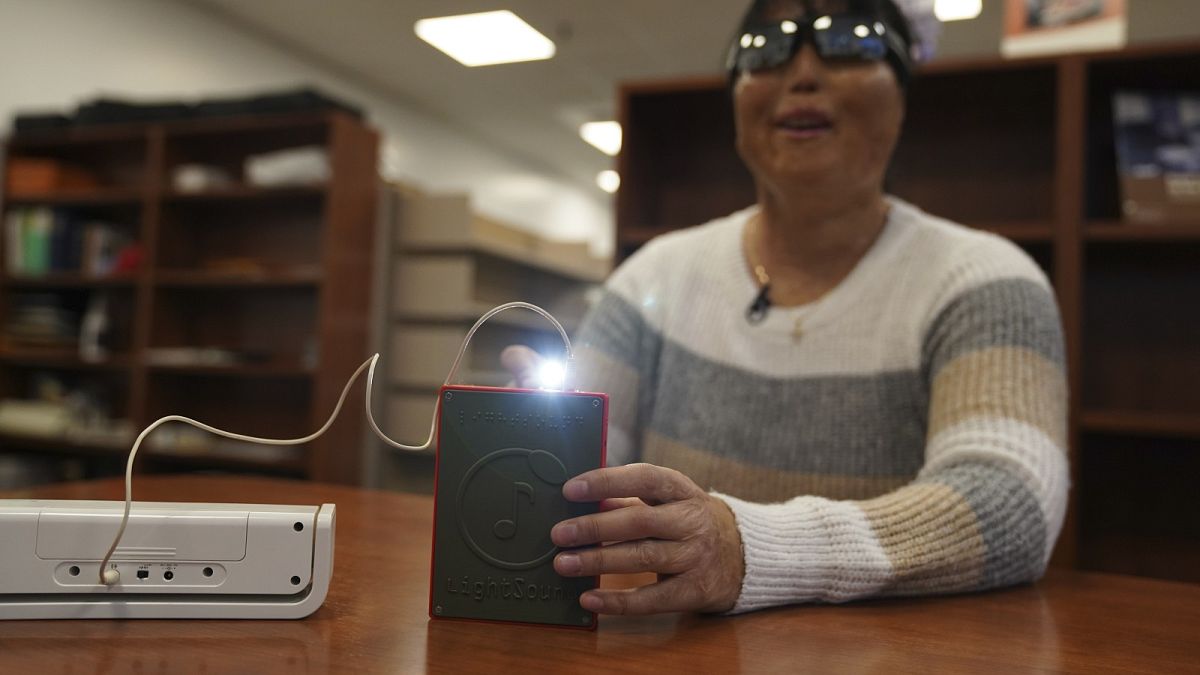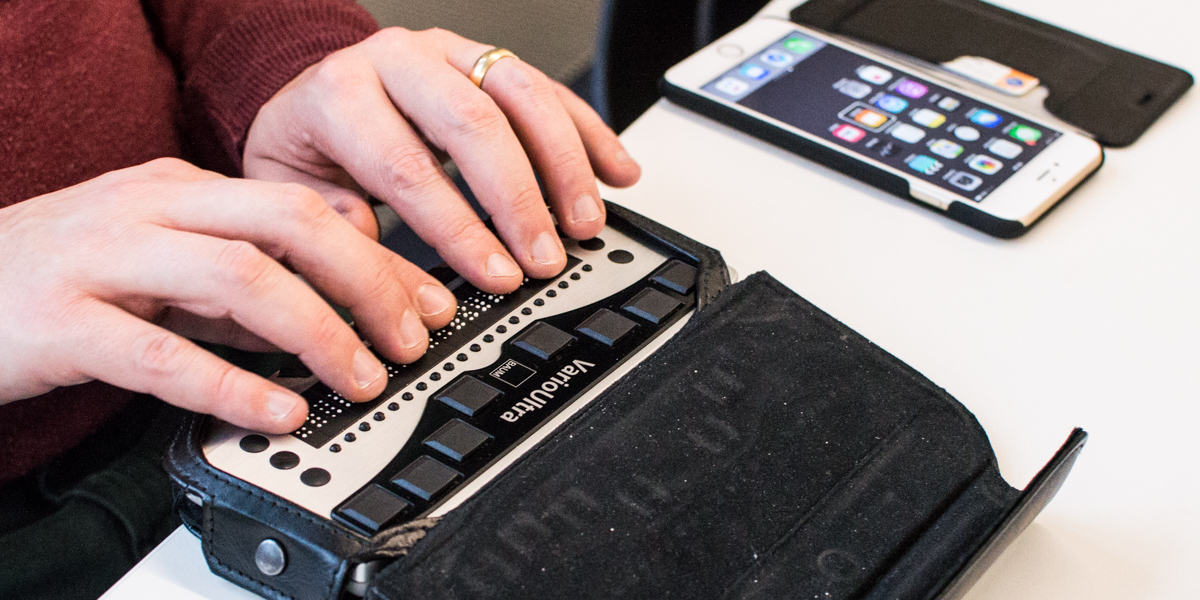Discover Ingenious Devices Created for the Visually Impaired
The growth of ingenious tools for the aesthetically damaged stands for a considerable development in accessibility and independence. Technologies such as clever glasses with AI abilities and mobile applications made to supply auditory descriptions are improving everyday experiences for customers. Furthermore, wearable gadgets that utilize haptic feedback boost environmental understanding, while modern Braille innovations offer new ways to involve with text. As these devices remain to progress, their effect on the lives of those with visual impairments raises important questions about the future of inclusivity and autonomy in numerous aspects of life. What lies ahead in this technical landscape?
Smart Glasses for Navigation

Smart glasses created for navigating are reinventing the way visually damaged people interact with their atmosphere. These innovative devices use a mix of electronic camera innovation, synthetic knowledge, and acoustic comments to give real-time info about environments. By utilizing challenge discovery systems, wise glasses can notify users to prospective risks, allowing much safer movement in both acquainted and unknown settings.
The integration of GPS modern technology even more boosts navigation capacities, enabling users to receive acoustic directions as they relocate. This hands-free strategy not only cultivates self-reliance but also equips aesthetically damaged people to navigate metropolitan landscapes with boosted confidence. In addition, numerous smart glasses are outfitted with attributes that determine landmarks and street indications, supplying contextual info that enhances the user experience.
Additionally, the advancement of these tools is continually progressing, with companies working to enhance the accuracy of object recognition and broaden the variety of navigational features. As smart glasses come to be much more available and affordable, they hold the possible to substantially change everyday life for aesthetically impaired customers. Ultimately, these ingenious devices represent a crucial step towards inclusivity, offering enhanced mobility and a better sense of autonomy for people navigating the world around them.

Mobile Application for Daily Living
Just how can mobile applications improve the every day lives of aesthetically impaired people? Mobile applications are transforming the means visually damaged users navigate their environments, manage everyday tasks, and accessibility info. These applications give necessary support through various capabilities, promoting independence and enhancing quality of life.
Numerous cutting-edge mobile apps are created particularly for everyday living. Applications like Be My Eyes link visually impaired customers with sighted volunteers through video calls, allowing them to get real-time aid with jobs such as reviewing labels or browsing unfamiliar areas. Seeing AI, created by Microsoft, uses man-made intelligence to define surroundings, read message, and identify things, efficiently changing a mobile phone into a powerful device for daily aid.
Furthermore, navigation apps customized for the visually impaired, such as Aira and BlindSquare, use audio-based directions and ecological information, enabling customers to traverse their environments safely and with confidence. Beyond navigation and instant support, mobile applications likewise support company and task monitoring, with attributes that aid users establish reminders, develop to-do lists, and track appointments. In recap, mobile applications act as vital resources, encouraging visually damaged individuals to lead even more independent and satisfying lives.
Wearable Technologies for Aid
Empowerment through modern technology is progressively apparent in the realm of wearable devices designed to aid aesthetically impaired individuals. These innovative tools incorporate flawlessly into life, boosting navigation and providing crucial feedback to individuals. As an example, clever glasses geared up with electronic cameras can read and acknowledge faces text out loud, enabling individuals to communicate more confidently in social and professional setups.
Another remarkable innovation is using haptic responses systems in wearable tools. These systems use vibrations or various other tactile signals to share information regarding the customer's atmosphere, such as challenges or changes in terrain, improving mobility and safety. Wearable innovations also include wristbands that link to smartphones, alerting customers to notifications via refined resonances, thus enhancing connectivity without dependence on visual signs.
As these innovations proceed to develop, they are not just improving self-reliance for aesthetically damaged people yet likewise cultivating a higher feeling of addition in culture. By bridging the gap in between obstacles dealt with in day-to-day living yellow lens glasses and the capacity for autonomy, wearable technologies function as essential tools in the mission for equal rights and empowerment for those with aesthetic impairments.
Sound Summary Tools
Sound description devices play an important duty in improving accessibility for visually damaged individuals, offering them with the capability to involve with visual media. Voice-activated assistive devices. These devices provide narrated summaries of crucial visual elements in films, television programs, and live performances, guaranteeing that customers can totally comprehend the context and emotions conveyed through visuals
Sound summary can be incorporated right into various platforms, including streaming services, movie theater testings, and live theater. Several prominent streaming services now consist of audio summary as an availability function, allowing audiences to pick it quickly. In addition to traditional media, specialized applications likewise exist, providing audio summaries for art exhibits, galleries, and various other social events.
The effectiveness of read the article audio description pivots on the skill of the storytellers, who have to convey visual information succinctly without diminishing the original audio. Innovations in this field are additionally paving the means for even more individualized experiences, where users can readjust the degree of detail and pacing according to their preferences.
Braille Innovations and Gadgets
Braille tools and innovations have actually substantially changed the means aesthetically impaired individuals communicate with message and info. Modern innovations have led to the development of functional tools that enhance literacy and freedom among users.
Moreover, mobile Braille notetakers incorporate standard Braille input with contemporary capabilities, promoting note-taking, scheduling, and file editing and enhancing on the go. Braille displays and notetakers. These portable gadgets frequently feature text-to-speech capacities, connecting the space between Braille and acoustic info
Furthermore, cutting-edge Braille printers have emerged, permitting users to create Braille tags, papers, and instructional products effectively. This access fosters better participation in professional and educational environments, eventually promoting inclusivity.
Additionally, research into smart Braille modern technologies remains to broaden. Devices that incorporate expert system are being explored to provide real-time navigating assistance and contextual information, enhancing the customer experience in varied settings. In general, these advancements show a dedication to equipping aesthetically impaired individuals with modern technology, ensuring they can conveniently access and engage with the globe around them.

Verdict
The improvement of ingenious tools for the visually impaired considerably improves self-reliance and lifestyle. Smart glasses, mobile applications, wearable innovations, audio summary devices, and Braille advancements collectively equip individuals by offering important navigating assistance, environmental understanding, and boosted reading experiences. These innovations not just foster higher addition however also advertise freedom in everyday tasks, eventually adding to an extra fair and obtainable society for visually damaged people. Proceeded growth in this area holds assurance for further enhancements.
As wise glasses come to be same day eyeglasses near me much more budget friendly and easily accessible, they hold the possible to dramatically transform everyday life for visually damaged users. Mobile applications are transforming the means aesthetically damaged individuals navigate their atmospheres, take care of day-to-day jobs, and gain access to details. Apps like Be My Eyes connect visually impaired individuals with sighted volunteers using video clip telephone calls, permitting them to obtain real-time aid with jobs such as reviewing tags or navigating unknown spaces.Furthermore, navigating apps tailored for the visually impaired, such as Aira and BlindSquare, offer audio-based instructions and environmental info, making it possible for customers to traverse their environments securely and with confidence.The improvement of ingenious tools for the aesthetically damaged dramatically improves self-reliance and high quality of life.